Popular categories
Looking for a yarn?
Sea Crossing
DROPS Jumper in Silke-tweed and Cotton Viscose with wrap-round at front
Size: S – M – L – XL - XXL
Materials: DROPS Silke-tweed
200-200-250-250-250 g colour no 10, grey
and use:
DROPS Cotton Viscose,
300-350-400-400-450 g colour no grey
DROPS pointed needles size 5.5mm
-------------------------------------------------------
Alternative Yarn – See how to change yarns here
Yarn Groups A to F – Use the same pattern and change the yarn here
Yarn usage using an alternative yarn – Use our yarn converter here
-------------------------------------------------------
- English (UK/cm), Bulgaria
- Česky - not translated
- Dansk
- Deutsch
- Eesti keel - not translated
- English (UK/cm)
- English (US/in)
- Español
- Français
- Íslenska - not translated
- Italiano - not translated
- Magyar
- Nederlands
- Norsk
- Polski
- Português
- Suomi
- Svenska
- English (UK/cm), Croatia
- English (UK/cm), Greece
- English (UK/cm), Latvia
- English (UK/cm), Lithuania
- English (UK/cm), Romania
- English (UK/cm), Slovenia
- Česky, Slovakia - not translated
Pattern instructions
Increasing: (applies when referred to in pattern). All increases are done form the right side of the jumper within 3 garter sts as follows: yarn round needle, on next row, purl yarn round needle in order not to create a hole.
Decreasing: (applies when referred to in pattern). All decreases are done from the right side of the jumper within 3 garter sts as follows: after 3 garter sts: slip st as if to knit, knit 1, psso, before 3 garter sts: knit 2 together.
Back: Cast on 63-71-79-87-95 sts (incl 1 edge st each side) using 1 thread Silke-tweed + 1 thread Cotton Viscose and 5.5mm needle. Knit 4 rows garter stitch and continue in stocking stitch. When back measures 5, 7 and 9 cm, decrease 1 st each side = 57-65-73-81-89 sts. When back measures 12 cm, increase 1 st each side every 2-2-2-2.5-2.5 cm a total of 7-7-7-6-6 times = 71-79-87-93-101 sts. When back measures 27-28-29-30-31 cm, decrease for armhole each side on every other row as follows: 3 sts 1 time, 2 sts 1-2-3-4-5 times and 1 st 1-2-3-3-4 times = 59-61-63-65-67 sts. When back measures 43-45-47-49-51 cm knit 4 rows garter stitch over the middle 23 sts. Then cast off the middle 17 sts for neck = 21-22-23-24-25 sts left on each shoulder. Finish each shoulder separately, knitting the 3 sts on neck in garter on all rows. Cast off when back measures 46-48-50-52-54 cm.
Right Front: Knitted diagonally! Read all of the following before knitting it:
Cast on 22-24-26-28-30 using 1 thread Silke-tweed + 1 thread Cotton Viscose and 5.5mm needle. Knit 4 rows garter stitch and continue in stocking stitch, but 3 sts in garter on left side (= 1st side = mid front/bottom edge). At the same time, after 2 rows garter stitch, cast on, on right side (= 2nd side = side seam) on every other row as follows: 1 st 5-6-7-8-9 times, 2 sts 4 times, 3 sts 2 times and 4 sts 1 time = 45-48-51-54-57 sts. Right front measures approx 12-13-14-15-16 cm. Continue with 3 garter sts each side and decrease on 2nd side - see Decreasing – 1 st on every 4th row 6-7-11-12-13 times and 1 st on every 6th row 4-4-2-2-2 times = 35-37-38-40-42 sts. The front piece measures approx 36-39-42-45-48 cm. Now increase on 2nd side – see Increasing - 1 st on every 4th row 6-5-4-3-1 times and 1 st on every other row 4-6-9-11-15 times. At the same time, when front piece measures 40-44-48-52-56 cm, (from cast on edge), cast off on side-1 on every other row: 1 st 7 times (decrease at the edge, after the 3 garter sts have been cast off, knit stocking stitch over all sts). The front piece measures approx 47-51-55-59-63 cm. On next row, cast off 8-10-13-16-18 sts for armhole on 1st side and then 1 st x 20-20-20-20-21 as follows: *decrease on every row 3 times, knit one row without decreasing*, repeat from *-* (decrease from edge). After the last increase on 2nd side, the front piece measures approx 51-54-58-61-65 cm. Now decrease on 2nd side, 1 st (from the edge) on every other row until all sts have been decreased. The front piece measures approx 60-64-68-72-76 cm from casting on edge to outer shoulder.
Left Front: Cast on and knit as right front, but mirrored.
Sleeves: Cast on 36-38-40-42-42 sts (incl 1edge st each side) using 1 thread Silke-tweed + 1 thread Cotton Viscose and 5.5mm needle. Knit 4 rows garter stitch and continue as follows: *2 rows stocking stitch, purl 1 row l*. Repeat from *-* until sleeve measures 10 cm. Now continue in stocking stitch. When sleeve measures 13 cm, increase 1 st each side every 3.5-3-3-2.5-2 cm a total of 10-11-11-12-14 times = 56-60-62-66-70 sts. When sleeve measures 48-47-45-44-42 cm, decrease for armhole each side on every other row as follows: 3 sts 1 time, 2 sts 3 times, 1 0-1-3-4-6 times and thereafter 2 sts each side until sleeve measures 55 cm. Cast off 3 sts each side, knit 1 row and cast off remaining sts. Sleeve measures approx 56 cm.
To make up: Join shoulders and set in sleeves. Place right front piece over the left front piece and stitch both layers to back piece.
This pattern has been corrected. Click here to see the correction/s.
Right front:...on every other row as follows: 1 st 5-6-7-8-9 times, 2 sts 4 times, 3 sts 2 times and 4 sts 1 time = 45-48-51-54-57 sts...
Diagram
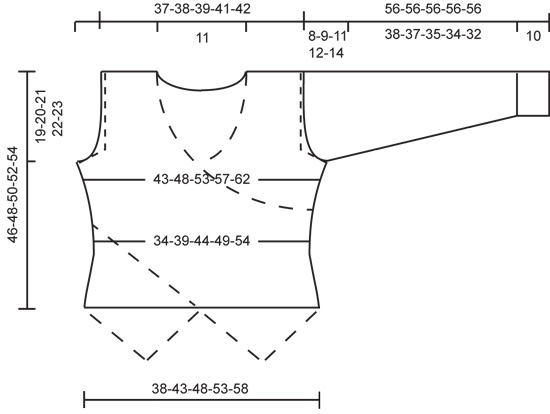
What can you do with our patterns? You can share DROPS patterns online, using the pattern original picture, materials, name and number. But you are NOT ALLOWED to reproduce the complete pattern digitally in any way. Yarn stores are welcome to use the DROPS pattern database to promote the sale of our assortment. You can print out our patterns, make as many copies as you’d like. The only thing we ask is that you don't make any changes / additions to the original printed document. And that the patterns according to the DROPS philosophy are given out to the consumers for free. Editorials that wish to publish our patterns in printed books or magazines can contact us for more information. The sale of garments based on DROPS patterns is permitted as long as they are sold as single items or per order. Further commercial use of the patterns is not permitted. It has to be clearly stated that the garment is made based on a design from DROPS DESIGN. The use of clothing labels of which DROPS DESIGN forms part is conditioned by the inclusion of the following text: “A DROPS DESIGN made by …..”. The use of DROPS photos for marketing purposes/sales is only permitted in connection with the use/sale of DROPS products. The photos may not be cut or edited and the logo should be clearly visible.
We reserve the right to withdraw the permission for use of our patterns at any time, notwithstanding the reason.
Each of our patterns has specific tutorial videos to help you.
These step-by-step tutorials might also help you:
Why is the knitting/crochet tension so important?
Knitting tension is what determines the final measurements of your work, and is usually measured per 10 x 10 cm. It is provided like so: number of stitches in width x number of rows in height - eg: 19 stitches x 26 rows = 10 x 10 cm.
The knitting tension is very individual; some people knit/crochet loosely while others work tightly. You adjust the knitting tension with the needle size, which is why the suggested needle size is only meant as a guide! You need to adjust this (up or down) to ensure that YOUR knitting tension matches the knitting tension provided in the pattern. If you work with a different knitting tension than provided you will have a different yarn consumption, and your work will have different measurements than what the pattern suggests.
The knitting tension also determines which yarns can replace each other. As long as you achieve the same knitting tension you can replace one yarn with another.
See DROPS lesson: How to measure your tension/gauge
See DROPS video: How to make a gauge tension swatch
How do I know how many balls of yarn I need?
The required amount of yarn is provided in grams, eg: 450 g. To calculate how many balls you’ll need you first need to know how many grams are in 1 ball (25g, 50g or 100g). This information is available if you click on the individual yarn quality on our pages. Divide the amount required with the amount of each ball. For example, if each ball is 50g (the most common amount), the calculation will be as follows: 450 / 50 = 9 balls.
Can I use a different yarn than what the pattern suggests?
The important thing when changing from one yarn to another is that the knitting/crochet tension remains the same. This is so that the measurements of the finished piece will be the same as on the sketch provided. It is easier to achieve the same knitting tension using yarns from the same yarn group. It is also possible to work with multiple strands of a thinner yarn to achieve the knitting tension of a thicker one. Please try our yarn converter. We recommend you to always work a test swatch.
Please NOTE: when changing yarn the garment might have a different look and feel to the garment in the photo, due to individual properties and qualities of each yarn.
See DROPS lesson: Can I use a different yarn than the one mentioned in the pattern?
What are the yarn groups?
All our yarns are categorised into yarn groups (from A to F) according to thickness and knitting tension – group A contains the thinnest yarns and group F the thickest. This makes it easier for you to find alternative yarns to our patterns, should you wish to switch yarn. All yarns within the same group have a similar knitting tension and can easily replace each other. However, different yarn qualities have different structures and properties which will give the finished work a unique look and feel.
How do I use the yarn calculator?
At the top of all our patterns you’ll find a link to our yarn calculator, which is a helpful tool should you wish to use a different yarn than suggested. By filling in the yarn quality you wish to replace, the amount (in your size) and number of strands, the calculator will present good alternative yarns with the same knitting tension. Additionally it will tell you how much you’ll require in the new qualities and whether you’ll need to work with multiple strands. Most skeins are 50g (some are 25g or 100g).
If the pattern is worked with multiple colours, every colour will have to be calculated separately. Similarly, if the pattern is worked with several strands of different yarns (for example 1 strand Alpaca and 1 strand Kid-Silk) you will have to find alternatives for each, individually.
Why do you show discontinued yarns in the patterns?
Since different yarns have different qualities and textures we have chosen to keep the original yarn in our patterns. However, you can easily find options among our available qualities by using our yarn calculator, or simply pick a yarn from the same yarn group.
It is possible that some retailers still have discontinued yarns in stock, or that someone has a few skeins at home that they would like to find patterns for.
The yarn calculator will provide both alternative yarn as well as required amount in the new quality.
What size should I knit?
If you think it's hard to decide what size to make, it can be a good idea to measure a garment you own already and like the size of. Then you can pick the size by comparing those measures with the ones available in the pattern's size chart.
You'll find the size chart at the bottom of the pattern.
See DROPS lesson: How to read size chart
Why do I get the wrong knitting tension with the suggested needle size?
The needle size provided in the pattern serves only as a guide, the important thing is to follow the knitting tension. And since knitting tension is very individual, you will have to adjust the needle size to ensure that YOUR tension is the same as in the pattern – maybe you’ll have to adjust 1, or even 2 needle sizes, up or down to achieve the correct tension. For this, we recommend that you work test swatches.
Should you work with a different knitting tension than the one provided, the measurements of the finished garment might deviate from the measurement sketch.
See DROPS lesson: How to measure your tension/gauge
See DROPS video: How to make a tension/gauge swatch
Why is the pattern worked top-down?
Working a garment top-down provides more flexibility and room for personal adjustment. For example it is easier to try the garment on while working, as well as making adjustments to length of yoke and shoulder caps.
The instructions are carefully explaining every step, in the correct order. Diagrams are adjusted to the knitting direction and are worked as usual.
How do I work according to a knitting diagram?
The diagram depicts all rows/rounds, and every stitch seen from the right side. It is read from bottom to top, from right to left. 1 square = 1 stitch.
When working back and forth, every other row is worked from the right side and every other row is worked from the wrong side. When working from the wrong side, the diagram will have to be worked reversed: from left to right, knit stitches are purled, purl stitches are knit etc.
When working in the round every round is worked from the right side and the diagram are worked from right to left on all rounds.
See DROPS lesson: How to read knitting diagrams
How do I work according to a crochet diagram?
The diagram depicts all rows/rounds, and every stitch seen from the right side. It is worked from bottom to top, from right to left.
When working back and forth every other row is worked from the right side: from right to left and every other row is worked from the wrong side: from left to right.
When working in the round, every row in the diagram are worked from the right side, from right to left.
When working a circular diagram you start in the middle and work your way outwards, counter clockwise, row by row.
The rows usually start with a given number of chain stitches (equivalent to the height of the following stitch), this will either be depicted in the diagram or explained in the pattern.
See DROPS lesson: How to read crochet diagrams
How do I work several diagrams simultaneously on the same row/round?
Instructions for working several diagrams after each other on the same row/round, will often be written like so: “work A.1, A.2, A.3 a total of 0-0-2-3-4 times". This means you work A.1 once, then A.2 is worked once, and A.3 is repeated (in width) the number of times provided for your size – in this case like so: S = 0 times, M = 0 times, L=2 times, XL= 3 times and XXL = 4 times.
The diagrams are worked as usual: begin with the first row in A.1, then work the first row in A.2 etc.
See DROPS lesson: How to read knitting diagrams
See DROPS lesson: How to read crochet diagrams
Why are the sleeves shorter in larger sizes?
The total width of the garment (from wrist-to-wrist) will be larger in the larger sizes, despite the actual sleeves being shorter. The larger sizes have longer sleeve caps and wider shoulders, so there will be a good fit in all sizes.
Where on the garment is the length measured?
The measurement sketch/schematic drawing provides information regarding the full length of the garment. If it’s a jumper or a jacket the length is measured from the highest point on the shoulder closest to the neckline, and straight down to the bottom of the garment. It is NOT measured from the tip of shoulder. Similarly, the length of yoke is measured from the highest point on the shoulder and down to where yoke is split into body and sleeves.
On a jacket measures are never taken along bands, unless specifically stated. Always measure inside band stitches when measuring the length.
See DROPS lesson: How to read a schematic drawing
What is a repeat?
Diagrams are often repeated on the round or in height. 1 repeat is the diagram the way it appears in the pattern. If it says to work 5 repeats of A.1 in the round, then you work A.1 a total of 5 times after/next to each other in the round. If it says to work 2 repeats of A.1 vertically/in height you work the entire diagram once, then begin again at the start and work the entire diagram one more time.
Why does the piece start with more chain stitches than it’s worked with?
Chain stitches are slightly narrower than other stitches and to avoid working the cast-on edge too tight, we simply chain more stitches to begin with. The stitch count will be adjusted on the following row to fit the pattern and measurement sketch.
Why increase before the rib edge when the piece is worked top-down?
The rib edge is more elastic and will contract slightly compared to, for example, stocking stitch. By increasing before the rib edge, you avoid a visible difference in width between the rib edge and the rest of the body.
Why increase in the cast-off edge?
It’s very easy to cast off too tightly, and by making yarn overs while casting off (and simultaneously casting these off) you avoid a too tight cast off edge.
See DROPS video: How to bind off with yarn overs (yo)
How do I increase/decrease on every 3rd and 4th row/round alternately?
To achieve an even increase (or decrease) you can increase on, for example: every 3rd and 4th row alternately, like so: work 2 rows and increase on the 3rd row, work 3 rows and increase on the 4th. Repeat this until the increase is complete.
See DROPS lesson: Increase or decrease 1 st on every 3rd and 4th row alternately
How can I work a jacket in the round instead of back and forth?
Should you prefer to work in the round instead of back and forth, you may of course adjust the pattern. You’ll need to add steeks mid-front (usually 5 stitches), and follow the instructions. When you would normally turn and work from the wrong side, simply work across the steek and continue in the round. At the end you’ll cut the piece open, pick up stitches to work bands, and cover the cut edges.
See DROPS video: How to knit steeks and cut open
Can I work a jumper back and forth instead of in the round?
Should you prefer to work back and forth instead of in the round, you may of course adjust the pattern so you work the pieces separately and then assemble them at the end. Divide the stitches for the body in 2, add 1 edge stitch in each side (for sewing) and work the front and back pieces separately.
See DROPS lesson: Can I adapt a pattern for circular needles into straight needles?
Why is the pattern slightly different than what I see in the photo?
Pattern repeats can vary slightly in the different sizes, in order to get the correct proportions. If you’re not working the exact same size as the garment in the photo, yours might deviate slightly. This has been carefully developed and adjusted so that the complete impression of the garment is the same in all sizes.
Make sure to follow instructions and diagrams for your size!
How do I make a women’s size garment into a men’s size one?
If you have found a pattern you like which is available in women’s size it’s not very difficult to convert it to men’s size. The biggest difference will be the length of sleeves and body. Start working on the women size that you think would fit across the chest. The additional length will be worked right before you cast off for the armhole/sleeve cap. If the pattern is worked top-down you can add the length right after the armhole or before the first decrease on sleeve.
Regarding additional yarn amount, this will depend on how much length you add, but it is better with a skein too many than too few.
How do I prevent a hairy garment from shedding?
All yarns will have excess fibres (from production) that might come off as lint or shedding. Brushed yarns (ie hairier yarns) have more of these loose, excess fibres, causing more shedding.
Shedding also depends on what is worn under or over the garment, and whether this pulls at the yarn fibres. It’s therefore not possible to guarantee that there will be no shedding
Below are some tips on how to get the best result when working with hairier yarns:
1. When the garment is finished (before you wash it) shake it vigorously so the looser hairs come off. NOTE: do NOT use a lint roller, brush or any method that pulls at the yarn.
2. Place the garment in a plastic bag and put it in your freezer - the temperature will cause the fibres to become less attached to each other, and excess fibres will come off easier.
3. Leave in the freezer for a few hours before taking it out and shaking it again.
4. Wash the garment according to the instructions on the yarn label.
Why does my garment pill?
Pilling is a natural process that happens to even the most exclusive of fibers. It's a natural sign of wear and tear that is hard to avoid, and that is most visible in high friction areas of your garment like a sweater's arms and cuffs.
You can make your garment look as new by removing the pilling, using a fabric comb or a pill/lint remover.
In the meantime, you can read the questions and answers that others have left to this pattern or join the DROPS Workshop on Facebook to get help from fellow knitters/crocheters!
You might also like...
Sea Crossing |
|
|
|
|
DROPS Jumper in Silke-tweed and Cotton Viscose with wrap-round at front
DROPS 81-28 |
|
|
Knitting Tension: 16 stitches x 20 rows using 5.5mm needle and 1 thread of each wool type in stocking stitch = 10 x 10 cm Increasing: (applies when referred to in pattern). All increases are done form the right side of the jumper within 3 garter sts as follows: yarn round needle, on next row, purl yarn round needle in order not to create a hole. Decreasing: (applies when referred to in pattern). All decreases are done from the right side of the jumper within 3 garter sts as follows: after 3 garter sts: slip st as if to knit, knit 1, psso, before 3 garter sts: knit 2 together. Back: Cast on 63-71-79-87-95 sts (incl 1 edge st each side) using 1 thread Silke-tweed + 1 thread Cotton Viscose and 5.5mm needle. Knit 4 rows garter stitch and continue in stocking stitch. When back measures 5, 7 and 9 cm, decrease 1 st each side = 57-65-73-81-89 sts. When back measures 12 cm, increase 1 st each side every 2-2-2-2.5-2.5 cm a total of 7-7-7-6-6 times = 71-79-87-93-101 sts. When back measures 27-28-29-30-31 cm, decrease for armhole each side on every other row as follows: 3 sts 1 time, 2 sts 1-2-3-4-5 times and 1 st 1-2-3-3-4 times = 59-61-63-65-67 sts. When back measures 43-45-47-49-51 cm knit 4 rows garter stitch over the middle 23 sts. Then cast off the middle 17 sts for neck = 21-22-23-24-25 sts left on each shoulder. Finish each shoulder separately, knitting the 3 sts on neck in garter on all rows. Cast off when back measures 46-48-50-52-54 cm. Right Front: Knitted diagonally! Read all of the following before knitting it: Cast on 22-24-26-28-30 using 1 thread Silke-tweed + 1 thread Cotton Viscose and 5.5mm needle. Knit 4 rows garter stitch and continue in stocking stitch, but 3 sts in garter on left side (= 1st side = mid front/bottom edge). At the same time, after 2 rows garter stitch, cast on, on right side (= 2nd side = side seam) on every other row as follows: 1 st 5-6-7-8-9 times, 2 sts 4 times, 3 sts 2 times and 4 sts 1 time = 45-48-51-54-57 sts. Right front measures approx 12-13-14-15-16 cm. Continue with 3 garter sts each side and decrease on 2nd side - see Decreasing – 1 st on every 4th row 6-7-11-12-13 times and 1 st on every 6th row 4-4-2-2-2 times = 35-37-38-40-42 sts. The front piece measures approx 36-39-42-45-48 cm. Now increase on 2nd side – see Increasing - 1 st on every 4th row 6-5-4-3-1 times and 1 st on every other row 4-6-9-11-15 times. At the same time, when front piece measures 40-44-48-52-56 cm, (from cast on edge), cast off on side-1 on every other row: 1 st 7 times (decrease at the edge, after the 3 garter sts have been cast off, knit stocking stitch over all sts). The front piece measures approx 47-51-55-59-63 cm. On next row, cast off 8-10-13-16-18 sts for armhole on 1st side and then 1 st x 20-20-20-20-21 as follows: *decrease on every row 3 times, knit one row without decreasing*, repeat from *-* (decrease from edge). After the last increase on 2nd side, the front piece measures approx 51-54-58-61-65 cm. Now decrease on 2nd side, 1 st (from the edge) on every other row until all sts have been decreased. The front piece measures approx 60-64-68-72-76 cm from casting on edge to outer shoulder. Left Front: Cast on and knit as right front, but mirrored. Sleeves: Cast on 36-38-40-42-42 sts (incl 1edge st each side) using 1 thread Silke-tweed + 1 thread Cotton Viscose and 5.5mm needle. Knit 4 rows garter stitch and continue as follows: *2 rows stocking stitch, purl 1 row l*. Repeat from *-* until sleeve measures 10 cm. Now continue in stocking stitch. When sleeve measures 13 cm, increase 1 st each side every 3.5-3-3-2.5-2 cm a total of 10-11-11-12-14 times = 56-60-62-66-70 sts. When sleeve measures 48-47-45-44-42 cm, decrease for armhole each side on every other row as follows: 3 sts 1 time, 2 sts 3 times, 1 0-1-3-4-6 times and thereafter 2 sts each side until sleeve measures 55 cm. Cast off 3 sts each side, knit 1 row and cast off remaining sts. Sleeve measures approx 56 cm. To make up: Join shoulders and set in sleeves. Place right front piece over the left front piece and stitch both layers to back piece. |
|

|
|
|
Have you made this or any other of our designs? Tag your pictures in social media with #dropsdesign so we can see them! Do you need help with this pattern?You'll find tutorial videos, a Comments/Questions area and more by visiting the pattern on garnstudio.com. © 1982-2024 DROPS Design A/S. We reserve all rights. This document, including all its sub-sections, has copyrights. Read more about what you can do with our patterns at the bottom of each pattern on our site. |
With over 40 years in knitting and crochet design, DROPS Design offers one of the most extensive collections of free patterns on the internet - translated to 17 languages. As of today we count 304 catalogues and 11422 patterns - 11422 of which are translated into English (UK/cm).
We work hard to bring you the best knitting and crochet have to offer, inspiration and advice as well as great quality yarns at incredible prices! Would you like to use our patterns for other than personal use? You can read what you are allowed to do in the Copyright text at the bottom of all our patterns. Happy crafting!















































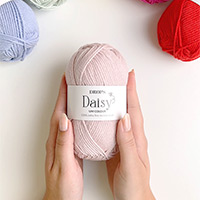
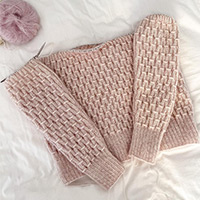
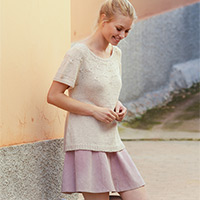
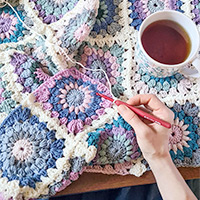
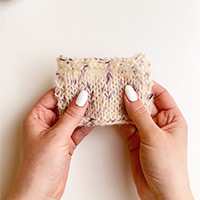
Comments / Questions (50)
Since neither of the yarns for this sweater are currently available, what replacements would you recommend? I tried your converter tool and it came up with the same replacements for both.
15.10.2018 - 15:25DROPS Design answered:
Dear Mrs Bensman, both Silke Tweed and Cotton Viscose were yarns group A, that's the reason why you will be suggesting same yarns - read more about the alternatives here. Click on each yarn name (where you can read discontinued to read more about the yarns. Happy knitting!
15.10.2018 - 16:05Bonjour, Quand vous écrivez \\\" à 44 cm de hauteur totale (à partir du rang de montage), voulez-vous dire du début de l\\\'ouvrage (4 rgs de point mousse) ?
23.08.2018 - 18:31In the British version of the instructions for the Right Front the first set of increases has a typo... It finishes these increases with '4 st 11 time' which I read as 4 stitches eleven times. This would give far too many stitches but the American English version finishes this part with '4 st 1 time' ... This is the correct number (4 stitches ONCE not 4 stitches 11 times). Hope this helps clear up anyone else's confusion. Happy knitting :)
03.03.2017 - 00:58My suggestion for a name: "Summer Wrapture" 😊
23.07.2016 - 23:34Lis wrote:
This is just the sweater that I'm looking for but I'd like it to be about 4 inches longer at the back and fronts. Easy to just add length to the back but should I just add width to the fronts to get the extra length. I thought I'd make the L but if I cast on for the XXL and then follow the shaping for the L, would that work? Or could you suggest some other way please? Many thanks. Lis
05.07.2016 - 17:46DROPS Design answered:
Dear Lis, for any individual assistance, you are welcome to contact your DROPS store, they will have tips & advices for you. Happy knitting!
06.07.2016 - 07:50Pour le devant, lorsqu'on commence les aug. au côté 2, est-ce qu'on doit les faire au bord du tricot ou à quelques mailles du bord? Si c'est à quelques mailles, pourriez-vous svp préciser le nombre de mailles. Merci.
02.02.2015 - 02:45DROPS Design answered:
Bonjour Nadine L, les augmentations sur le côté 2 au début de l'ouvrage se font au bord directement (on monte d'abord plusieurs mailles sur plusieurs rangs), celles qui se font côté 2 à partir de 36-48 cm (cf taille) se font avec 1 jeté à 3 m des bords (voir "Augmentations pour les devants"). Bon tricot!
02.02.2015 - 13:17Sie schreiben: Weiter wird auf Seite-1 von der Kante so abgekettet: 1 M 20-20-20-20-21 Mal auf alle 3.Ndl und danach 1 Ndl ohne zu abketten, stricken ; jedoch ist unklar was gemeint ist. Heißt das: alle 3 Reihen eine abketten und das 20 Mal (während eine ohne abketten gestrickt wird), oder heißt das anstatt 2 Maschen zu einer zusammenzuziehen, ziehen wir 3 zusammen... Und: Ndl. = Reihe? Vielen Dank :)
21.01.2015 - 21:42DROPS Design answered:
Die Anleitung ist schon sehr alt und wird noch sprachlich überarbeitet. Es soll heißen, dass Sie an der Seite-1 in 3 R nacheinander 1 M abnehmen, in der 4. R dann keine Abnahme arbeiten. Also 3 R stricken und in jeder R an Seite-1 1 M abnehmen, dann 1 R ohne Abnahme stricken. Dann wieder 3 R mit Abnahme, 1 R ohne. Das machen Sie so lange, bis Sie 20 M abgenommen haben.
27.01.2015 - 22:55Les 2 fils proposés pour ce tricot sont de même grosseur, mais il en faut 200g de l'un et 300g de l'autre pour la plus petite taille. Les quantités de fil ne devraient-elles pas être égales?
30.12.2014 - 16:24DROPS Design answered:
Bonjour Nadine L., les quantités sont différentes pour chacune de ces 2 qualités car elles n'ont pas le même métrage, Silke Tweed (épuisée) faisait environ 200 m pour 50 g et Cotton Viscose environ 110 m pour 50 g, d'où la différence. Cliquez ici pour une équivalence à Silke Tweed et le calcul de la quantité. Bon tricot!
31.12.2014 - 12:35Bonjour. Pour la manche, après les diminutions pour la taille 2: 1fois 3m, 3 fois 2m et 1 fois 1m, il est écrit : et 2 m jusqu'à 55 cm de hauteur totale. Faut-il diminuer 2m une seule fois ou tous les 2rgs jusqu'à 55 cm, c'est à dire 3 ou 4 fois 2m? Merci beaucoup pour votre réponse. En tous cas modèle très sympa. Bonne journée.
14.11.2014 - 07:23DROPS Design answered:
Bonjour Anne, quand vous avez rabattu pour les manches de chaque côté 1 x 3m, 3 x 2m et 1 x 1 m, vous continuez en rabattant 2 m de chaque côté jusqu'à ce que la manche mesure 55 cm de hauteur totale, puis vous rabattez 1 fois 3 m de chaque côté avant de rabattre les mailles restantes. Le nombre de fois dépendra de votre tension (nbe de rangs) en hauteur, l'important ici étant de bien mesurer. Bon tricot!
14.11.2014 - 15:18Bonsoir, Je voudrais savoir s'il faut faire 3 m en point mousse sur le côté 2 une fois les premières augmentations réalisées (on est à 15 cm de hauteur totale). J'ai l'impression d'en voir sur la photo. D'avance merci pour votre aide. Marie-Laure
29.05.2013 - 22:38DROPS Design answered:
Bonjour Marie-Laure, on continue effectivement avec 3 m au point mousse de chaque côté après 15 cm (taille XL). Bon tricot !
30.05.2013 - 09:26